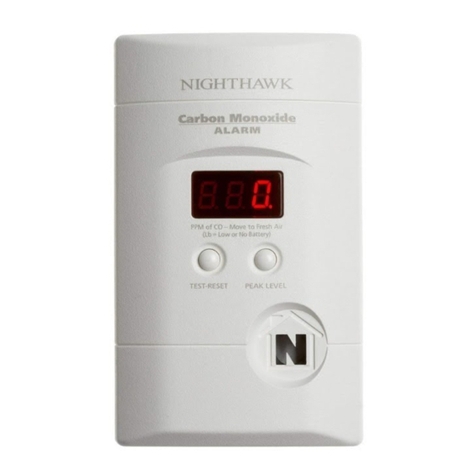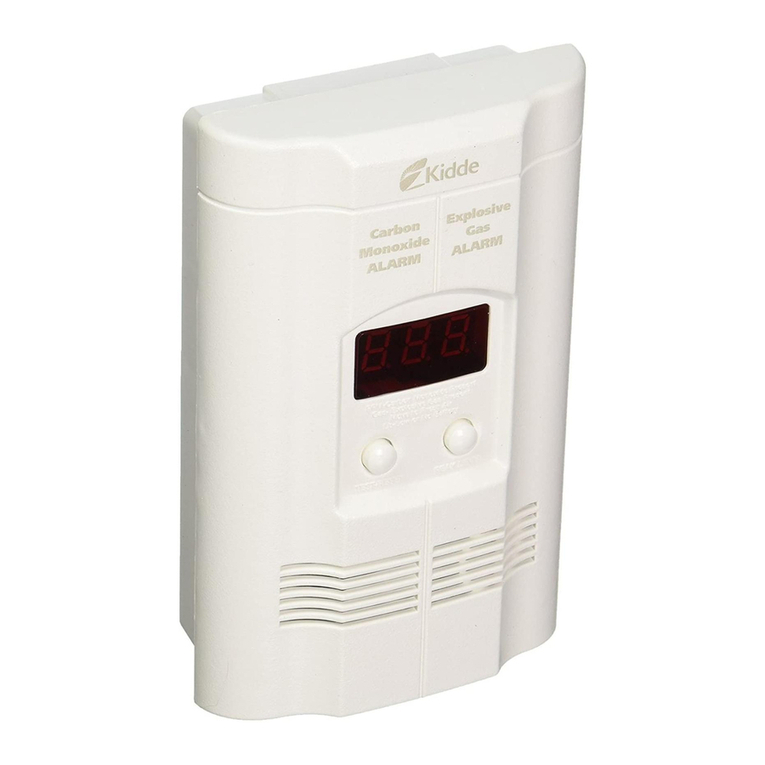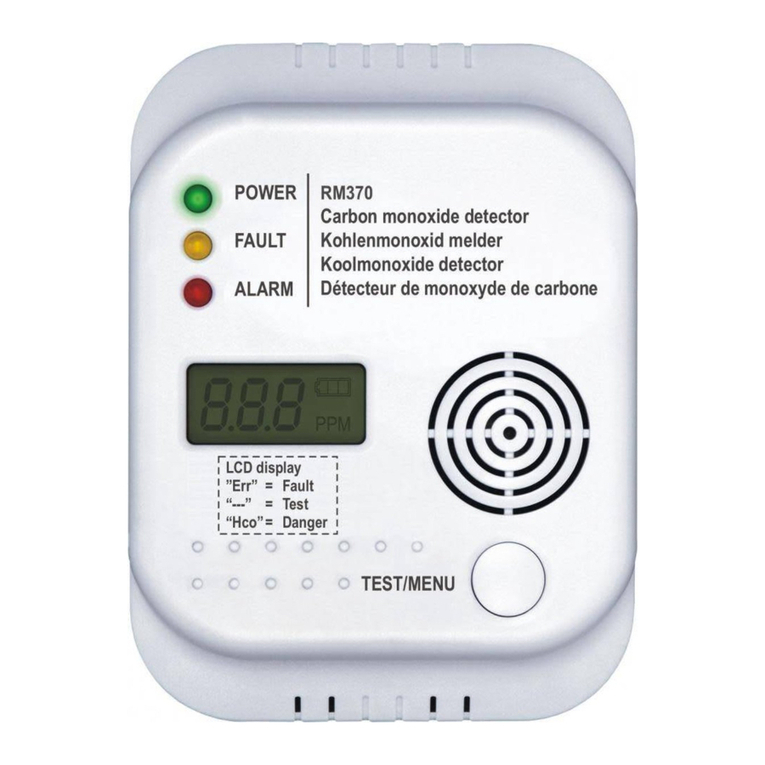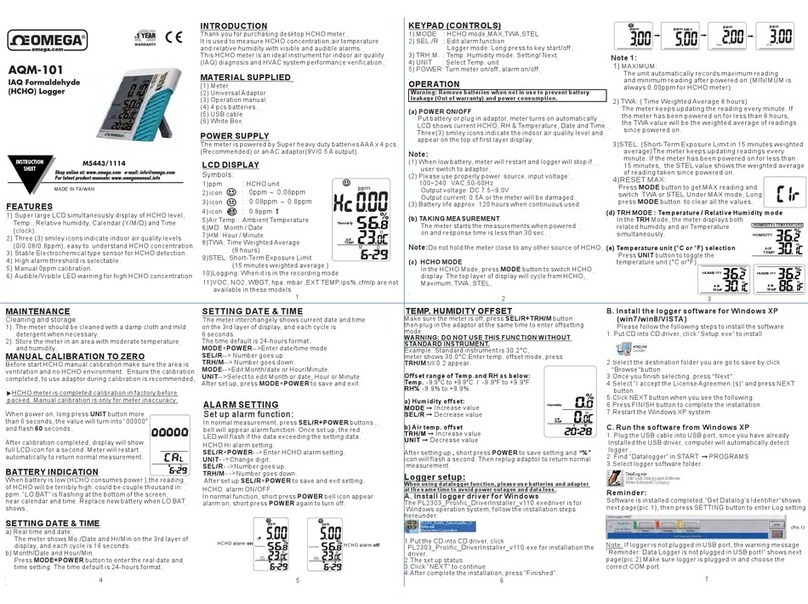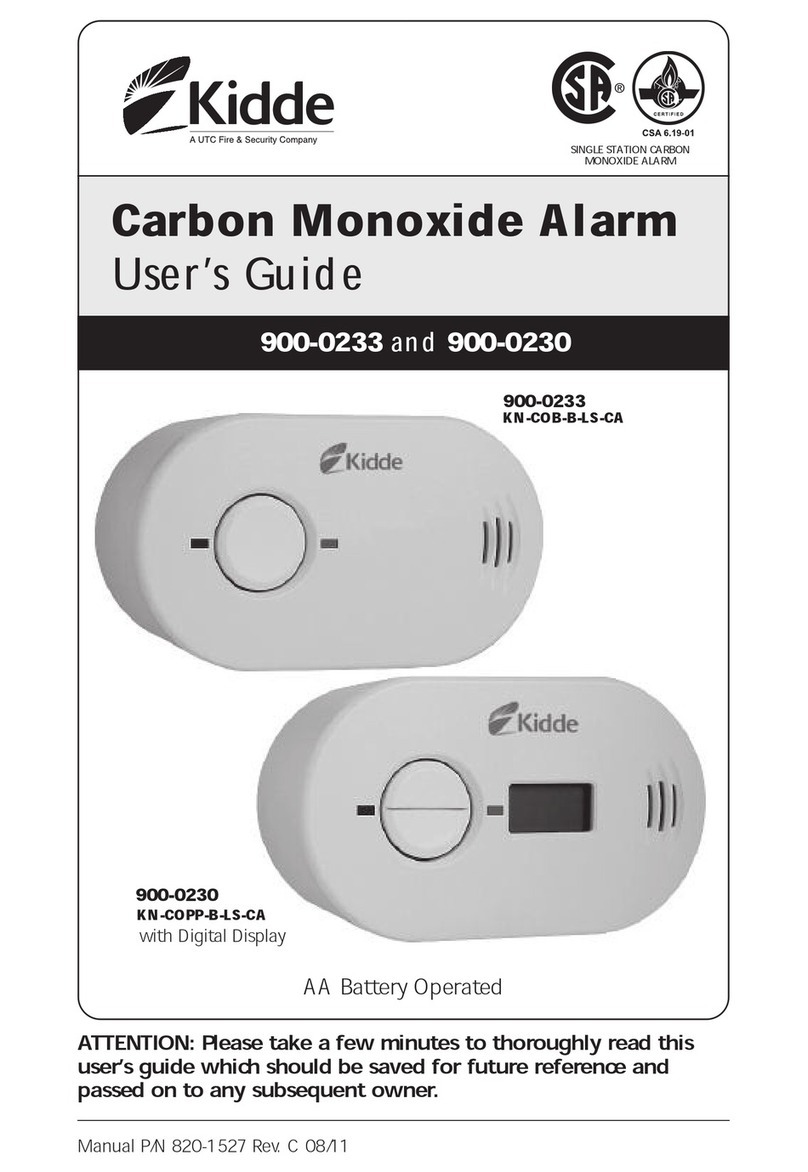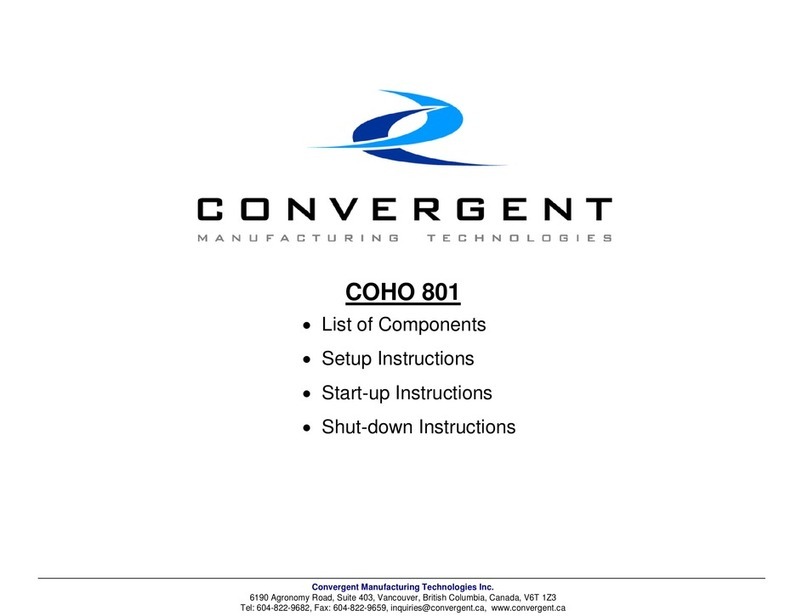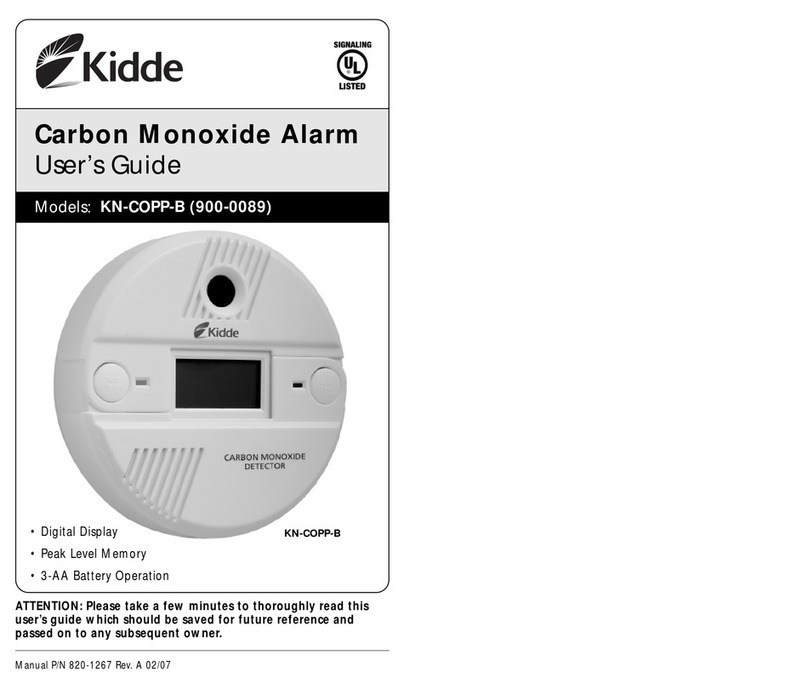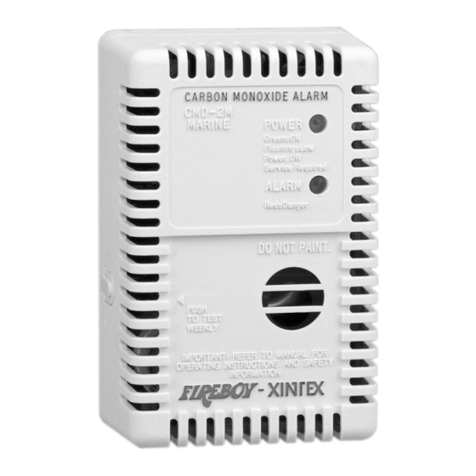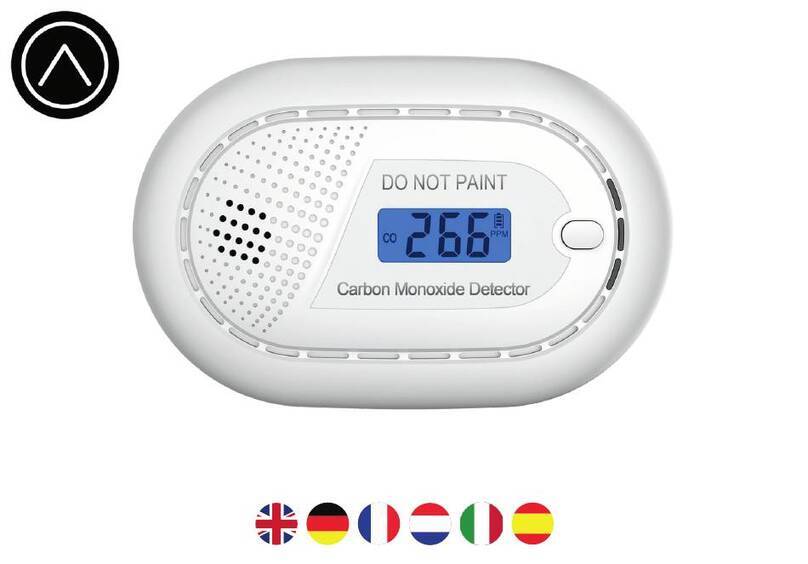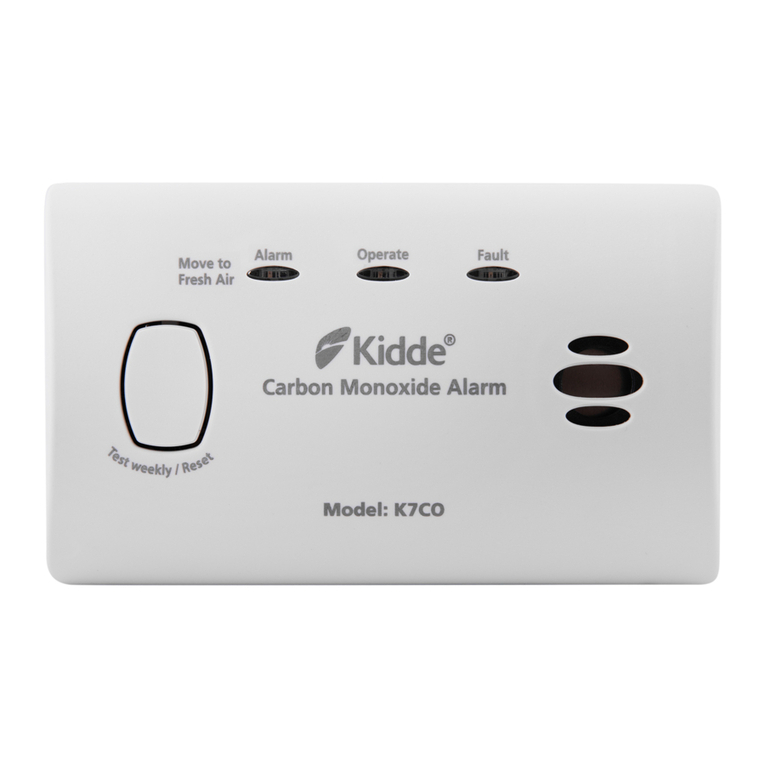Everday ECO-983 SERIES User manual

CARBONMONOXIDE
DETECTOR
ECO.983
SERIES
USER'S
MANUAL
INTRODUCTION
Everday's Carbon Monoxide Detector rs effective for
ctetecting
any buildupof carbonmonoxide, also knownas
COgas,
inyour
homeoroffice.Thefeatures
ofyour
COgas
detectorincludes:
(1) Easyto install.
lt allows
connectingto firecontrol
panel
or security
monitoring
system.
(2) Monitoring
for
carbon
monoxideina continuous
manner.
(3) Givinga loud
alarm
(85
dB)when
itdetects
a buildupof
carbonmonoxide.
(4) Selftesting itsoperativefunctions
continuously.
(5) Offering
a S-year
wanantyfor the carbonmonoxide
sensing
unit.
YOU
SHOULD
KNOWABOUT
CARBON
MONOXIDE
Carbon
monoxide,
alsoknown
as
"CO"
bythechemical
form,
¡s
considered
tobe
a highly
dangerous
poísonous
gas,
because
it
-ie-ee*adess,-edoCess-ec tasteles+án+verytexi*€enereF--
biochemistry
phenomena
have
shownthatthepresence
ofCO
gasinhibits
theblood's
capacitytotransport
oxygen
throughout
thebody,
which
caneventually
leadtobraindamage.
Inany enclosed
space(home,office,recreat¡onal
vehicleor boat)
even
a smallaccumulation
ofCOgas
canbequ¡te
dangerous.
Although many productsof combustioncan cause discomfort
and adverse health effects, it is CO gas which presents the
greatest
threatto life.
Carbon
monoxide
isproduced
bytheincomplete
combustionof
fuels
suchas natural
gas,propane,
heatingoil,kerosene,
coal,
charcoal,
gasoline,
orwood.
Theincomplete
combusüon
offuel
can occur
in anydevicewhichdepends
on burningfor energy
or heat such as furnaces, boilers, room heaters, hot water
heaters,stoves,grills,and in any gasol¡nepoweredvehicleor
engine (e.9. generatorset, lawnmower).fobacco smoke also
addsCO to the airyou breathe.
When properlyinstalledand mainta¡ned,
your natural gas
furnaceand hotwater heaterdo not polluteyour air spacewith
CO. Natural gas is known as a "clean burning"fuel because
under correct operating conditions, the combustion products
are water vapor and carbon dioxide (CO2), which is not toxic.
The productsof combustionare exhaustedfrom furnaces and
water heaters
to the outsideby meansof a fuel ductor chimney.
Correct operationof any buming eguipment requirestwo key
conditions:
(a)
An adequate
supply
of airforcomplete
combustion.
(b) Properventing of the productsof combusüonfrom the !
fumace
through
thechimney,ventorducttotheoutside.
Typical
carbon
monoxide
gas problems
aresummarized
here:
(a) Equipment
problems,
due to defects,poor maintenance,
damaged
andcracked
heat
exchangers
(b) Collapsed or blocked chimneys or flues, dislodged,
disconnected
ordamagedvents
(c) Downdraft
in chimneysor flues.This can be causedby
verylongor circuitous
flueruns,improperlocaüon
offlue
exhaustorwindconditions
(d) lmproperinstallation
or operation
of equipment,
chimney
orvents
(e) Air tightness
of houseenvelop/inadequate
combustion
of
at
(0 Inadequate
exhaust
of space
heatersorappl¡ances
(g) Exhaustventilaüon/fireplace
competing
forairsupply
Potential
sources
ofcarbon
monoxide
inyourhome
oroftce
include
clogged
chimney,woodstove,
woodorgasfireplace,
automobile
andgarage,
gaswaterheater,gasappliance,
gas
or kerosene
heater,
gasoroilfumace,
andcigarette
smoke.
POSSIBLE
SYMPTOMSOFCARBONMONOXIDE
POISONING
Carbon
monoxideiscolorless,
odorless, tasteless,
andvery
toxic.
When inhaled,it produces
an effect known
as
, chemical
asphyxiation.
lnjuryisdue to thecombining
of CO
i withtheavailable
hemoglobin
inthe blood,lowering
the
oxygen-carrying
capacity
ofthe blood. ln the presence
of
i COgas,the bodyisquickly
affected by oxygenstarvation.
¡ Thefollowing
symptomsarerelatedto CO poisoning
andshould
: bediscussed
withallmembers
ofthe householdsothat
you
I know
whatto look for:
I (a) Extremeexposure:
unconsciousness,
convuls¡ons,
cardiorespiratory
fuilure,death
(b) Medium exposure: severe throbbing headache,
drowsiness,confusion,
vomit¡ng,
fast heartrate
(c)
Mild
exposure:slightheadache,
nausea,fatigue
(similar
to "flu-like" symptoms)
YOUng
CnilOrenano nousenolo
pets
may Detne nrsl anecreo.
Exposure during sleep is part¡cularly
dangerous, because the victim
usually
doesnotawaken.
LOCATIONS TO INSTALL YOUR ETECTOR
SinceCOgas movesfreely
intheair, the suggested
locationis
inoras nearas possible
tosleepingareas of the home.
The
human
bodyis most vulnerableto the effects of COgasduring
sleeping
hours.For maximum
protect¡on,
a CO detectorshould
belocatedoutsideprimary
sleeping
areas or on eachlevelof
yourhome.Inthe figurebelow,aresuggested locaüons
inthe
home.The electronicsensor
detectscarbon monox¡de.
measures
the concentrationandsounds a loudalarmbefore
a
potentially
harmfullevelisreached.
Donot
place
thedetector
inthefollowingareas:
(a) Where
thetemperaturemay
dropbelow40oF
(4.4oC)
or
exceed100oF
(37.8oc) i
(b) Near
paint
th¡nnerfumes
(c) Within
5feet
(1.5
meter)
of
openflameappliances
suchas
furnaces,
stovesandfireplaces
(d) In
exhauststreamsfrcm
gas
engines,
vents,
fluesor
chimneys
(e) Donot
place
inclose
proximity
toanautomobile
exhaust
pipe;
thiswilldamagethedetector
WIRINGDIAGRAM FORECO-983 SERIESCARBON
MONOXIDEDETECTORS
Figure
2showsthe
wiring
diagram
forECO-983
series
carhon
monoxide
detectors.
FIRSTDETECTORBASE

(1)
(2)
INSTALLING
THE
BASEOFDETECTOR
(1) All the wiresin the basecompartment
should
be flattened
and are not touched to any connectorsto ensure that the
detectorheadbesmoothlyfastenedto the base.
(2) When using the jump wires to check the connectivityfor
eachgas detectorinthe circuitloop(e.9.connecting
point
2
andpoint
3 with
ajump
wire
asshowninFigure
3),besure
to remove all the jump wires before attaching the detector
headonto the base.
(3) Be sure that the components
used in the circuit
loop as
shown in Figure 3 should be coupled up with those
componentsused in the transceivercircuitryof the control
panel.
(4) The base is allowedto be installedwithin an available
wiringbox includingoctagon
box (3", 3.5",
or 4"), circular
box (3") and rectangular
box (4" long),
withoutusingany
otheradditionalmechanical
adapters.
INSTALLING
THE
DETECTORHEAD
Alignuptheposition
ofheadtothebase,seeFigure
4.
Screwthe detectorhead intothe base in clockwise
direction.
Figure
3 Alignmentofdetectorheadanditsbase
MAINTENANCE
OFCARBON
MONOXIDE
DETECTORS
Aco
detector
constanüymonitors
any
carbonmonoxideunderits
normal
operationalconditions.The followingmaintenance
procedures
forgasdetectorswillassureitsdesired
performance:
(1) Use a vacuumcleanerto cleanthe dust aroundthe vent
holesof gas detectorcover.
(2\ CanVout a regularorweeklytest of gas detectors
TYPES FOR DETECTORSIGNALING
The
carbon
monoxide
detectorhas
tobewarmed
upforatleast
10
minutes
after
beingenergized,
thenthe
test
procedure
canbe
followed.
There
arethree
types
ofdetector
signaling:
(1) RedLED
light
signalindicates
thedetector¡n
thenormal
monitoring
condition.
(2) When the carbonmonoxideis detected,the light will
change
intoflashing
ofred
LEDlight,
asaccompanyingthe
alarm
sounds.
(3) lf thedetector
is notin normal
operation,
the buzzerwill
sound
onceeveryminute
toindicatethat
themalfunction
is
detected
bythe
built-inself-monitoring
circuitry
ACTIONS
TOTAKEWHEN
ALARMSOUNDING
In case of harmful levels of CO gas being detected,your
detector
will go into a continuous
full alarm. Try to take,the
following
necessaryactions
immediately:
(a) lf there is anyone experiencing the effects of carbon
monoxide
poisoning
such
as headache,
dizziness,
nausea
or other flu-like symptoms, call your fire department right
away or 911. You shouldevacuateall the peoplein the
premisesimmediately.Do a head count to check that
everybodyis accountedfor.
(b) Do not re-enterthe premises
untilthe problem
has been
corrected
and the CO gas has beend¡spersedout and a
safe levelis reached.
(c) lf no symptomsexist, lmmediately
ventilatethe home by
openingwindowsanddoors.
Tum ofifuel buming
appliances
and call a qualifiedtechnicianor your utility company to
inspect
andrepair
yourproblem
before
restartingappliances.
WARNING:Normallyan activationof the detectorindicates
the
presence
of CO gas.However,the CO gas can be.extremely
fatal,if it is notdetected.
Thesource
of theCO gas maycome
lrqm :eysl?L pgs!!.b!e
_.s_iJu?ll9!!_
-p,!e€,s9_.f9.f.etl-t9
lhe list of
sourcesofcarbonmonoxideinpage
1.
CAIJTION:This detectorwill onty indicatethe presenceof CO
gas at the sensor. However,you haveto be aware that the CO
gasmaybepresent
inotherareas
¡ntheprem¡ses.
ACTTONSTO
TAKEAFTERTHE
PROBLEMBEING
CORRECTED
Oncethe problem
about
theCO gaspresence
inthe premises
has
been conected, the alarm of the detector should be off. After
waitingfor 10minutes,
push
theTestbutton
to testthe detector
so
thatyou canmake
surethatthedetector
isworking
properly
again.
SPECIFIGATION:
GasMonitored co
Ooeratinq
Voltaoe 12Vdcor24Vdc
Sensiüvity 100ppmwithin
90minutes
200ppm
within
35minutes
400oomwithin15m¡nutes
AlarmSounds 85dB
OoeraünoTemo(t) 0'c-40t
PowerConsumotion 3W
OutputVoltage WithRelayOutput
(Dry
connectionoutout)
WARNINGANDLIMITATION
I Nete that E€G 983 series gao deteetor is net scppesed te b€ 1
usedas smoke
detectoror fire alarm.In addition,
this detector
shouldnotbe installedina "danger
aree"
asdefined
by Naüonal
' Electrical Code. A gas detector will operate normally under
regular power supply, therefore, it will not perform at any
situationwhen poweroutjage
occurs.
WARRANW INFORMATION
Underthe normaloperation
conditions,
the manuf¡acturer
provides
five-year
wananty for the sensor head of gas detectorand one-
yearwanantyfor otherparts
for repairing
withoutcharge.Partand
labor
charge
willbe requiredafterthewanantyis expired.
Maufacturer:
EverdayTechnologies
Co.,
Ltd
No8,
Lane
492,
Ba-Derstreet,
Shulin
238
TaipeiHsien,Taiwan
Tel:
(886-2)2668-9668
Fax:
(886-2)2668-9666
--t
Carryout
aregularorweeklytestofgas
detectors

